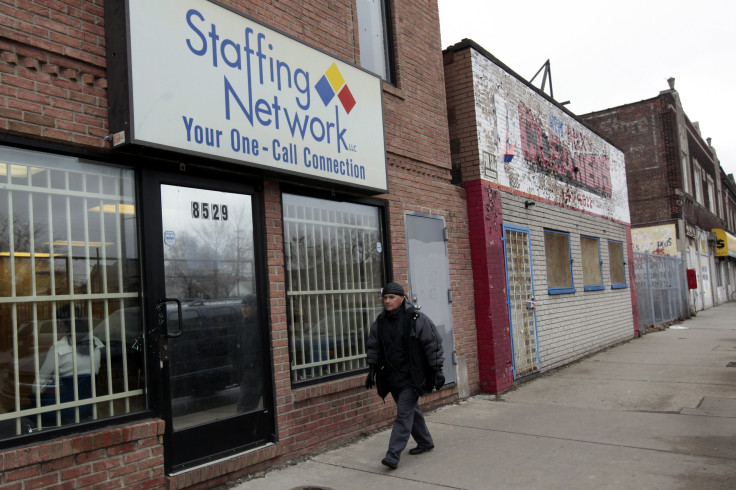October Jobs Report: Prime-Age Employment Ratio Languishes, But Change Could Be Around The Corner

October saw one of the strongest jobs reports since the end of the recession, with 271,000 nonfarm jobs added in the month and the headline unemployment rate down to an even 5 percent. But one crucial sore spot in the employment picture was left unhealed: the share of prime-age adults in the labor force.
Since January, the percentage of adults 25 to 54 years of age in the workforce has stagnated at 77.2 percent -- a share that still remains below the nadirs of previous recessions. Despite a heating job market, droves of potential workers are still on the sidelines.
“You’re looking at people who you generally would expect to be working in the economy,” said Elise Gould, senior economist at the Economic Policy Institute, a progressive think tank. The measure, Gould said, “gets down to the crux of the economy.”
The stalling of prime-age labor force participation -- a measure closely watched by Federal Reserve Chair Janet Yellen -- comes even as other measures of economic vitality surged in October. The broader unemployment rate, which counts adults who have given up searching for jobs or are relegated to working part time, fell to 9.8 percent, the first time the measure has hit single digits since May 2008.
Wage growth accelerated to 2.5 percent year over year, the strongest pickup in pay since 2009 and a sign of tightening labor market conditions. Overall, the jobs report has been greeted as fresh ammunition for the Fed to hike near-zero interest rates at its next meeting in December.
“We went from quicksand in the last numbers to being pulled on firmer footing,” said Diane Swonk, chief economist at Mesirow Financial, a Chicago money management firm. Job gains were particularly strong in the healthcare industry and retail sector, bolstered by the coming holiday season hiring. Manufacturing and mining remained weak, however, especially as a strong dollar continued to put a damper on exports.
Swonk points hopefully to a bump in consumer sentiment driven by low-wage workers who are enjoying higher minimum wages in some sectors. And anecdotally, Swonk said, employers are beginning to reconsider hiring workers they might have passed up in previous years when even skilled professionals were scrambling for work.
“They’re having to dip into lower skill pools,” Swonk said. “That willingness to fill job openings and to make tradeoffs is extremely encouraging.”
But the last five years have been categorically different from previous recoveries. Government spending has been well below that of previous expansions, and corporate investments excluding intellectual property have been lackluster.
In one indication of remaining labor market slack, the number of adults working part time when they would rather be working full time remains well above prerecession levels. As a proportion of the overall labor force, the share of reluctant part-time workers is up 78 percent since before the recession.
Still, jobs are coming back, if slowly. “There’s nothing even about this recovery, there’s nothing normal about this recovery," Swonk said. “But at least we know we’re on track.”
© Copyright IBTimes 2024. All rights reserved.












